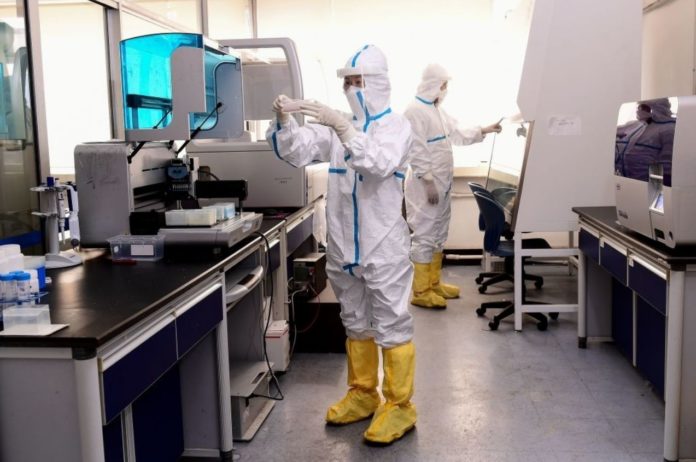Movies have tirelessly portrayed the catastrophes that can occur if a pathogen that poses great risk to humanity ‘escapes’ from a laboratory. In the real world, how do scientists gain the necessary knowledge about these dangerous microorganisms without infecting themselves and others?
Science currently knows about 1,400 human pathogens, that is, viruses, bacteria, fungi, protozoa, and helminths that can cause injury or even death to a person. However, on our planet, there are about a trillion different species of microorganisms, of which scientists have studied only one-thousandth of 1%.
- Brief Anger Hampers Blood Vessel Function Leading to Increased Risk of Heart Disease and Stroke – New Study
- New Blood Test Pinpoints Future Stroke Risk – Study Identifies Inflammatory Molecules as Key Biomarker
- Enceladus: A Potential Haven for Extraterrestrial Life in its Hidden Ocean Depths
- New Experiment: Dark Matter Is Not As ‘DARK’ As All We Think
- Scientists in Fear of This New Predator From Red Sea Eating Native Species in Mediterranean
So while it makes sense for us to avoid these dangerous agents in our everyday lives, scientists must study them closely to learn how they work. Understanding how pathogens causing injury is crucial for both medicine and human, as a veterinarian, said Jerry Malayer, professor of Physiological Sciences at the Faculty of Veterinary Medicine at Oklahoma State University in the United States.
“Understanding what these organisms do, how they do it, and how they spread helps researchers develop measures to detect, mitigate and control their expansion. The goal is to be able to cure or prevent the disease they cause. The more dangerous the pathogen, the more urgently scientists need to understand it,” writes Malayer in a column for The Conversation.
But how is it possible to learn more about these microorganisms without putting the lives of the scientists who investigate them and those around them at risk?
The truth is, pathogen studies are never a zero-risk initiative. However, over the decades, researchers have developed elaborate methods that allow laboratories to work with such microorganisms with high levels of safety.
Before starting a study it is necessary to document in advance what exactly is planned to be done, how it will be carried out, where it will take place and who will be the scientists involved. This information is reviewed by independent committees to ensure that the plans reflect the safest way to perform the work that is planned.
In addition, independent monitoring of the investigation is carried out both by professionals from the same institution in which it is carried out, as well as by experts from other bodies. Studies are often monitored by government entities to ensure that researchers are following approved procedures and regulations.
Scientists working with dangerous pathogens need to follow the practices of two basic concepts: biosafety and biosecurity. But what exactly are they and what is the difference between them?
Biosafety explains Malayer, refers to containment. It includes all the measures and procedures that keep scientists and their environment safe, namely: closed and ventilated workspaces, directional airflows, and anterooms to control air movement within the laboratory. In addition, the so-called HEPA filters, considered absolute filters, purify the air entering and leaving the laboratory.
“We stick to good laboratory work practices, and everyone suits up in personal protective equipment including gowns, masks and gloves. Sometimes we use special respirators to filter the air we breathe while in the lab. Additionally we often inactivate the pathogen we’re studying – essentially taking it apart so it is not functional – and work on the pieces one or a few at a time,” the scientist explained.
Biosecurity, meanwhile, is a measure designed to prevent loss, theft, or misuse release of a pathogen. They include access controls, inventory controls, and certified methods for decontaminating and disposing of waste.
Investigations are also often classified into biosafety levels.
“At each level the increased risk requires increasingly stringent precautions to keep workers safe and prevent any accidental or malicious misuse,” Malayer details.
In the United States, for example, internships are divided into four levels. The first two levels (BSL-1 and BSL-2) apply to studies where the risk is low or zero. In other words, the microorganisms analyzed do not represent a serious threat to people or animals.
Level three (BSL-3) indicates that it offers high individual risk but low community risk, that is, it means that the pathogen understudy can cause serious disease in humans, but treatments are available.
- Brief Anger Hampers Blood Vessel Function Leading to Increased Risk of Heart Disease and Stroke – New Study
- New Blood Test Pinpoints Future Stroke Risk – Study Identifies Inflammatory Molecules as Key Biomarker
- Enceladus: A Potential Haven for Extraterrestrial Life in its Hidden Ocean Depths
- New Experiment: Dark Matter Is Not As ‘DARK’ As All We Think
- Scientists in Fear of This New Predator From Red Sea Eating Native Species in Mediterranean
The fourth and final level (BSL-4) indicates that research is dealing with pathogens that pose a high risk of disease in humans and/or animals, that are transmitted between individuals, and for which there may not be a known effective treatment. Such investigations are relatively rare; it is estimated that they do not exceed five tens worldwide.
Photo by STR/AFP via Getty Images
